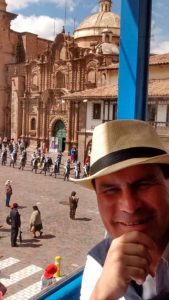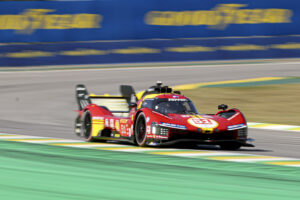LAKES ARE DRY IN BOLIVIA
BOLIVIA IN THE ALTIPLANIC MISS WATER, INDIGENOUS SUFFERING
GLACIER IS DRIED IN BOLIVIA AND GENERATES CLOSURE OF SKI CENTERS AND WATER CRISIS IN COMMUNITIES OF HIGHER HIGHLAND BOLIVIA
LA SEQUIA MÁS TERRIBLE EN TODA SU HISTORIA
The Poopo, the name of the lake that supplied water to the rural communities of upper Bolivia is dry. Today glaciers that once produced great water floods are beginning to melt with a rapidity that only scientists assume. The highest sky centers in the world are without snow and the last days the country is in a kind of prayer and demanding President Evo Morales to solve the water problem. Unless it rains Evo Morales will get a much worse headache.
Glaciers that could cause “catastrophic floods” in Bolivia if they melt are speculated will cause floods and floods in the northern valleys of high peaks.
The ski resort of Chacaltaya, at 5,421 meters above sea level for years fueled the adventure and entertainment of hundreds of tourists all over who visited the place that was built with European inspiration.
Today there is nothing left of his glory years. It looks more like an old abandoned film studio. “I used to come here when I was a kid and play with the snow for hours, until my eyes and ears hurt from the cold and the altitude,” says Felipe Kittelson, 63, while examining the arid mountain that rises in front of him “People were going to ski and sled here for seven or eight months a year. We were used to filling cups with ice and covering them with sticky syrup to give away,” recalls Kittelson. “This hotel used to always be surrounded by a lot of snow, but now there is nothing but rock around,” he laments. The mysterious giant lake that hides under a volcano in the Andes Chacaltaya is today a number of moldy rocks with hundreds of cold-resistant flames, but used to be a powerful glacier.
The snowy Chacaltaya
It is believed to be 18,000 years old and the glacier is dried. Bolivian scientists began measuring it in the 1990s They predicted in 2005 that they would survive until 2015 It fell faster than expected and had almost completely disappeared in 2009 Scientists think that the speed of their melting is an indicator of climate change What used to be an attraction for the middle and upper class of La Paz is now a small ghost town with rusty machinery, a cafeteria that now looks creepy and a bar that no longer has parishioners. There you can still see the photos of the skiers who happened there in the early years of the 90’s. All dressed in multicolored suits. A recent study by the Stockholm Institute of the Environment suggested that the temperature of the region increased by half a degree centigrade in the period between 1976 and 2006. Half degree might not sound much, but for the brothers Adolfo and Samuel Mendoza that variation meant seeing how the glacier in which they lived disappeared before their eyes. “Between my brother and I, we have been working here for decades, operating the cables of the mountain lift funicular,” said Samuel Montaño, 54. “Our father worked in this ski and hotel center since the 1940s, when this area was all covered with snow,” the man recalls while drinking a mate of coca. “It’s very sad to see everything this way.We warned about this in the 1980s, but nobody listened to us.Every year we saw that it was getting worse,” says Montaño. Adolfo, 62, and brother of Samuel, believes that the toxic fumes emitted by hundreds of thousands of diesel vehicles in the nearby city of La Paz contributed to the melting of the glacier. . Last week, cities in Paris, Madrid, Athens and Mexico City committed to ban all diesel-powered vehicles until 2025, but in a place like La Paz, where modern cars are very expensive, a similar decision can be made.
Decades back in the Chaclataya, a handful of backpackers venture to challenge the extreme altitude to photograph this mountain that at times depresses. The desolation of Chacaltaya contrasts with the bustling streets of La Paz. However, perhaps the Chacaltaya current may be seen as a sad prelude to the problems with water supply that now faces that city.
All dressed in multicolored suits.
A recent study by the Stockholm Institute of the Environment suggested that the temperature of the region increased by half a degree centigrade in the period between 1976 and 2006.
Half degree might not sound much, but for the brothers Adolfo and Samuel Mendoza that variation meant seeing how the glacier in which they lived disappeared before their eyes.
“Between my brother and I, we have been working here for decades, operating the cables of the mountain lift funicular,” said Samuel Montaño, 54.
“Our father worked in this ski and hotel center since the 1940s, when this area was all
covered with snow,” the man recalls while drinking a mate of coca.
“It’s very sad to see everything this way. We warned about this in the 1980s, but nobody listened to us. Every year we saw that it was getting worse,” says Montaño.
Adolfo, 62, and brother of Samuel, believes that the toxic fumes emitted by hundreds of thousands of diesel vehicles in the nearby city of La Paz contributed to the melting of the glacier.
But, he says, the problem is bigger than that.
“Occasionally, when it snows up here, the snow is filled with a greasy black substance, like filthy sand,” he describes.
“I think the cars in La Paz have some responsibility, but Bolivia is not an industrial country. We are being affected by the rest of the planet,” he said.
Last week, cities in Paris, Madrid, Athens and Mexico City committed to ban all diesel-powered vehicles until 2025, but in a place like La Paz, where modern cars are very expensive, a similar decision can be made. Decades.
Back in the Chaclataya, a handful of backpackers venture to challenge the extreme altitude to photograph this mountain that at times depresses.
The desolation of Chacaltaya contrasts with the bustling streets of La Paz.
However, perhaps the Chacaltaya current may be seen as a sad prelude to the problems with water supply that now faces that city.
By ERICK HINOJOSA MATAMALA





